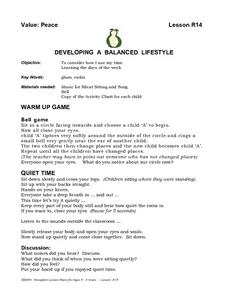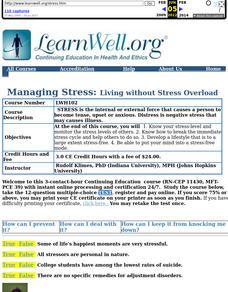Curated OER
Developing A Balanced Lifestyle
Students engage in a study of the character trait of peace and how it is useful to becoming part of a lifestyle. The lesson asks students to read a story that illustrates the concept that is followed by targeted questions to be answered.
Curated OER
World in the Balance
Students make estimates on how many people they believe live on Earth. While watching a video, they take notes on the issues facing Kenya, Japan and India. In groups, they calculate how long it takes for a country to double in size. To...
Global Oneness Project
Deconstructing Consumerism
A short, engaging video provides a critique of the hyper-consumerist mentality that many think have taken over the Western world. After watching the video, pupils reflect on their own habits and use evidence...
Curated OER
The Industrial Revolustion
Students create artistic posters to show the differences between key vocabulary words. They show the differences between a rural, agrarian, urban, and industrial lifestyles. They evaluate the benefits and problems, the human and...
Curated OER
We Are All Responsible
Students conduct research about the issue of conservation and the environment. They focus upon the interdependence of man and nature. They write and discuss the issue of environmental preservation. Students appreciate the importance of...
Curated OER
The Embodied Presidency
Tenth graders analyze Roosevelt's Fireside Chats. In this Franklin D. Roosevelt presidency, 10th graders determine how well FDR's government programs aided victims of the Great Depression. Students examine selected Fireside Chats and...
Curated OER
Managing Stress: Living without Stress Overload
Students explore a three hour set of readings, discussion questions an web links to gain tools to identify, alleviate and prevent stress in their lives. They work to develop a life-style that is, to a large extent, stress-free.
Curated OER
Breaking News English: Red Meat Increases Risk of Cancer
For this English worksheet, students read "Red Meat Increases Risk of Cancer," and then respond to 1 essay, 47 fill in the blank, 7 short answer, 20 matching, and 10 true or false questions about the selection.









